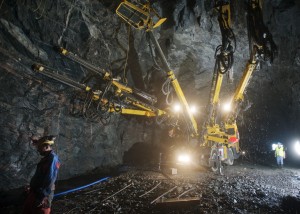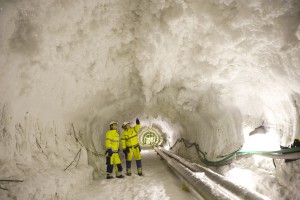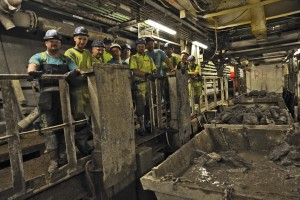As delegates at the recent New Civil Engineer Tunnelling 20Twenty conference in Hong Kong heard in October, the 21st century world is certainly going to need to invest in more underground infrastructure if it is to deliver the much needed – and much talked about – sustainable urban development.
“The only choice for metropolitan cities will be to go underground,” said International Tunnelling Association president In-Mo Lee. “We need to promote the use of underground structures for transport, leisure, flood control, storage and power and water supply as key to sustainable urban development.”
It is clear that every major city in the world is struggling with transport congestion and the need to find more effective and efficient ways of travelling and communicating. All seek solutions to the challenge of increasing populations a lack of surface space to house and employ them. Add to this the need to protect against, to cope with increasing volumes of waste water and protect against floods from rising sea levels and it is role of modern underground structures becomes clear.
The global tunnelling industry recognises this need and responding, working hard in virtually every region of the world to design and construct the infrastructure that will form the back bone of emerging and growing societies. Major infrastructure projects continue to drive economic recovery around the world as governments remain committed to investment in public transport, water, waste and energy projects to kick-start faltering economies.
The International Tunnelling Awards are designed specifically to celebrate this global activity and workload and are being held this December in Hong Kong to reflect and emphasise the fact that, right now, the Asian market is at the epicentre of tunnelling innovation and expertise. Hong Kong has a number of major tunnelling projects either already underway or about to kick off, including five multi-billion dollar projects for railway client MTR Corporation. Proximity to the blossoming Chinese market where some 50 TBMs are currently operating in the Shanghai region alone makes this year’s event hugely important in terms of uniting the global profession and providing a platform to share ideas and network.
 As Professor Bai Yun of Shanghai’s Tongji University pointed out do delegates at the Tunnelling 20Twenty conference, China currently invests 15-20% of its GDP in infrastructure as the nation races to meet the needs of an increasingly urbanising society. “Right now in China around 46% of the population is living in urban areas,” he said. “But this is increasing by 1% every year. We need to plan our infrastructure to cope with these extra millions of people living in cities.”
As Professor Bai Yun of Shanghai’s Tongji University pointed out do delegates at the Tunnelling 20Twenty conference, China currently invests 15-20% of its GDP in infrastructure as the nation races to meet the needs of an increasingly urbanising society. “Right now in China around 46% of the population is living in urban areas,” he said. “But this is increasing by 1% every year. We need to plan our infrastructure to cope with these extra millions of people living in cities.”
The awards attracted a record 74 entries from across the globe and, judged by a panel of industry experts, are designed specifically to celebrate and reward the outstanding work and innovation in the global tunnelling industry but also the work done to understand and deliver to client needs and to ensure that projects are realistic and deliverable.
Because the question for many governments around the world remains precisely how to embrace – and how to pay for – the economic and social opportunities that construction of new rail and road transport, water management and utility infrastructure will clearly bring.
And given the pressure on the public purse across Europe and the US, tunnelling engineers will, without question, have to work and think harder than ever to identify and then explain the benefits of infrastructure investment while all the time ensuring that the cost of delivery is benchmarked to as low as possible.Clearly there are major challenges facing the recession-struck western economies around how the case for investment will be won. Challenges that are somewhat different when compared with many other part of the world, not least the emerging nations of the Asia-Pacific region where the challenge is more about pace.
Similarly in Latin America, which according to Halcrow global tunnelling director Martin Knights, is set to be tunnelling’s next hot spot for workload. Brazil, Mexico and Argentina would, he said, increasingly drive the global market and emerge as “the global hidden gem”. He points to projects such as Argentina’s Buenos Aires water supply and stormwater programme, Brazil’s new high speed rail programme and metros ahead of the 2016 Olympics as examples of underground infrastructure that was set to transform nations and drive economies.
 And of course, the Middle East will continue as a key region for growth in tunnelling work over the next decade, including metro and water projects in the UAE and Kuwait and rail projects in Qatar ahead of the 2022 World football cup. However, the one unifying global tunnelling challenge that remains across the globe appears to be the continued lack of available engineering skills and tunnelling resources necessary to meet this growing demand for underground space. Boosting training is an area that every nation needs to embrace as a global opportunity. If the tunnelling community is to meet the global demand to provide sustainable infrastructure it must focus of nurturing its future talent.
And of course, the Middle East will continue as a key region for growth in tunnelling work over the next decade, including metro and water projects in the UAE and Kuwait and rail projects in Qatar ahead of the 2022 World football cup. However, the one unifying global tunnelling challenge that remains across the globe appears to be the continued lack of available engineering skills and tunnelling resources necessary to meet this growing demand for underground space. Boosting training is an area that every nation needs to embrace as a global opportunity. If the tunnelling community is to meet the global demand to provide sustainable infrastructure it must focus of nurturing its future talent.
Alongside, of course, the need to celebrate, reward and promote the industry’s successes and achievements. The shortlisted projects for the 12 categories of this year’s International Tunnelling Awards have been published and the overall winners will be announced at a specially organised awards ceremony in Hong Kong on 01 December, 2011.
All stand as exemplars for the industry and provide the skills, solutions and innovation that will enable the desire for increased underground space and infrastructure to become a reality at a price that is affordable by the world.














